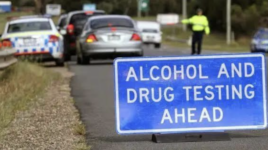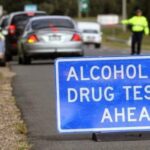Which Driving Offences are Considered ‘Major Traffic Offences’ in New South Wales?

The Road Transport Act 2013 contains many of the most frequently prosecuted traffic offences in New South Wales, including drink driving, driving under the influence, drug driving, negligent, reckless, predatory, menacing driving, and driving in a dangerous matter.
The maximum penalties that apply to these offences will depend on whether it is considered a driver’s or motorcycle rider’s ‘conviction’ for a first or subsequent ‘major traffic offence’ within five years.
Penalties increase for a second or subsequent major traffic offence
So, for instance, the maximum penalties that apply to what is considered under the law as a first offence for mid-range drink driving (also known as driving with a middle range prescribed concentration of alcohol) are:
- Up to nine months in prison,
- A six-month driver licence disqualification which can be reduced to 3 months, followed by 12 months during which the driver must have an interlock device installed to his or her vehicle, and
- A fine of up to $2,200.
Alternatively, the court can exempt the driver from the interlock requirement and impose maximum penalties of:
- Up to nine months in prison,
- A 12 month licence disqualification which can be reduced to 6 months, and
- A fine of up to $2,200.
If, however, if a person is considered to have been ‘convicted’ of any major traffic offence within the prior five years, the maximum penalties that apply to the subsequent offence of mid-range drink driving are:
- Up to 12 months in prison,
- A nine-month driver licence disqualification which can be reduced to 6 months, followed by 24 months during which the driver must have an interlock device installed to his or her vehicle, and
- A fine of up to $3,300.
Alternatively, the court can exempt the driver from the interlock requirement and impose maximum penalties of:
- Up to 12 months in prison,
- A three-year licence disqualification which can be reduced to 12 months, and
- A fine of up to $3,300.
Similarly increased penalties apply to each of the previously mentioned offences.
But which offences are regarded as ‘major traffic offences’ in New South Wales?
And what is a ‘conviction’ for the purposes of triggering the higher penalties that apply to a second or subsequent major traffic offence?
What is a major traffic offence in New South Wales?
Section 4 of the Road Transport Act provided the following list of offences that are considered major traffic offences for the purposes of the Act:
- Any offence involving death or bodily harm to another person caused by or arising out of the use of a motor vehicle, including murder, manslaughter, intentionally or recklessly wounding or causing grievous bodily harm (sections 33 and 35 of the Crimes Act), furious driving (section 53) and causing grievous bodily harm (section 54),
- Predatory driving (section 51A), police pursuit (section 51B) and failing to stop and assist after impact causing death or grievous bodily harm (section 52AB),
- Drink driving (section 110 Road Transport Act),
- Drug driving (section 111),
- Combined alcohol and drug driving (section 111A),
- Driving under the influence (section 112),
- Negligent driving occasioning death or grievous bodily harm (section 117(1)),
- Driving furiously, recklessly or at a speed or in a manner dangerous (section 117(2)),
- Menacing driving (section 118),
- Failing to stop to assist after impact causing injury or death (section 146),
- Refusing to submit to a breath analysis (clause 16(1)(b) of Schedule 3),
- Refusing or failing to provide a blood, oral fluid or urine sample (clause 17 of Schedule 3),
- Wilfully introducing amount or altering concentration of alcohol or other drugs (clause 18 of Schedule 3), and
- Aiding, abetting, counselling or procuring the commission of, or being an accessory before the fact to any of the above.
What is considered a ‘conviction’?
The Act makes clear that a major traffic offence is considered a second or subsequent one if the driver or rider was ‘convicted’ of the same or another major traffic offence in New South Wales or another Australian jurisdiction within the previous five years.
This means a finding of guilt without proceeding to conviction does not count, nor does a discharge for mental health reasons.
So, the following orders are not regarded as prior convictions for the purposes of determining whether a later offence is a second or subsequent offence:
- A dismissal under section 10(1)(a) of the Crimes (Sentencing Procedure) Act 1999,
- A conditional release order under section 9(1)(b) of that Act (previously known as a section 10 good behaviour bond),
- An intervention order under section 10(1)(c) of that Act, and
- A discharge into a mental health treatment plan under section 14 of the Mental Health and Cognitive Impairment Forensic Provisions Act 2020.
Prior penalty notice for drug or alcohol related major traffic offence
But while these ‘non-conviction orders’ are not counted as prior offences, a curious anomaly exists in section 9(2A) of the Road Transport Act which stipulates that if a subsequent offence is an alcohol or drug related major traffic offence (such as drink driving, drug driving or driving under the influence) a penalty notice that was issued within the previous five years for the same offence, or an equivalent offence in another state or territory, counts as a prior conviction – thereby triggering the higher penalties for the subsequent offence.
So, for a example, a person who was issued with a penalty notice for low range drink driving or drug driving within the previous five years and was then charged with the same category of offence would be facing the higher (second or subsequent offence) penalties that apply to the later offence charged.
This is despite the fact that, for all other intents and purposes, a penalty notice is not an admission or a finding of guilt, let alone a conviction.
Date of conviction applies
It is important to note that the date of conviction, rather than the date the offences took place, are relevant for determining whether the prior and later offences fall within the prescribed five years.
In other words, the ‘clock starts ticking’ on the day the conviction was recorded in court or, in the case of a penalty notice, the date the notice was considered to have been served.
Going to court for a traffic offence?
If you are going to court for a traffic offence, call Sydney Criminal Lawyers anytime on (02) 9261 8881 to arrange a free appointment with an experienced traffic lawyer who will explain the law, advise you of your options and the best way forward, and fight for the optimal outcome.
Receive all of our articles weekly
Related Articles
RELATED LEGISLATION
- Section 110 Road Transport Act 2013 | Driving with the Presence of a Prescribed Concentration of Alcohol in Person's Breath or Blood
- Section 4 Graffiti Control Act 2008 | Marking Premises or Property
- Section 112 Road Transport Act 2013 | Use or Attempted Use of a Vehicle Under the Influence of Alcohol or Any Other Drug
- Section 117 Road Transport Act 2013 | Negligent, Furious or Reckless Driving
- Section 118 Road Transport Act 2013 | Menacing Driving
- Section 51A Crimes Act 1900 | Predatory Driving
- Section 51B Crimes Act 1900 | Police Pursuits ('Skye's Law')
- Section 52AB Crimes Act 1900 | Failing to Stop and Assist After an Impact Causing Death or Grievous Bodily Harm
- Section 53 Crimes Act 1900 | Furious Driving






